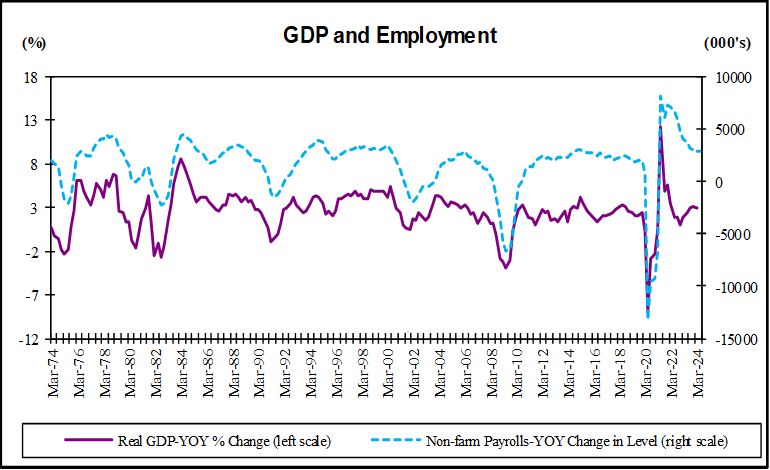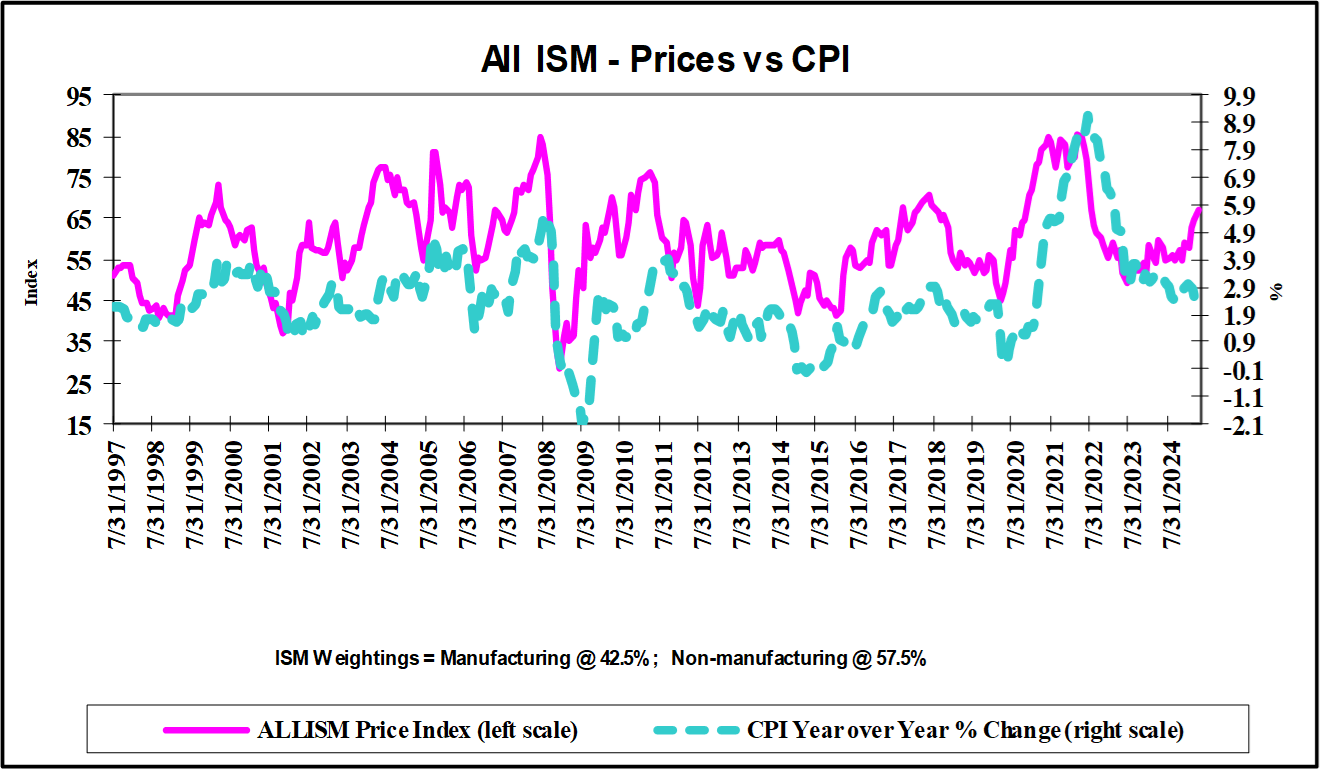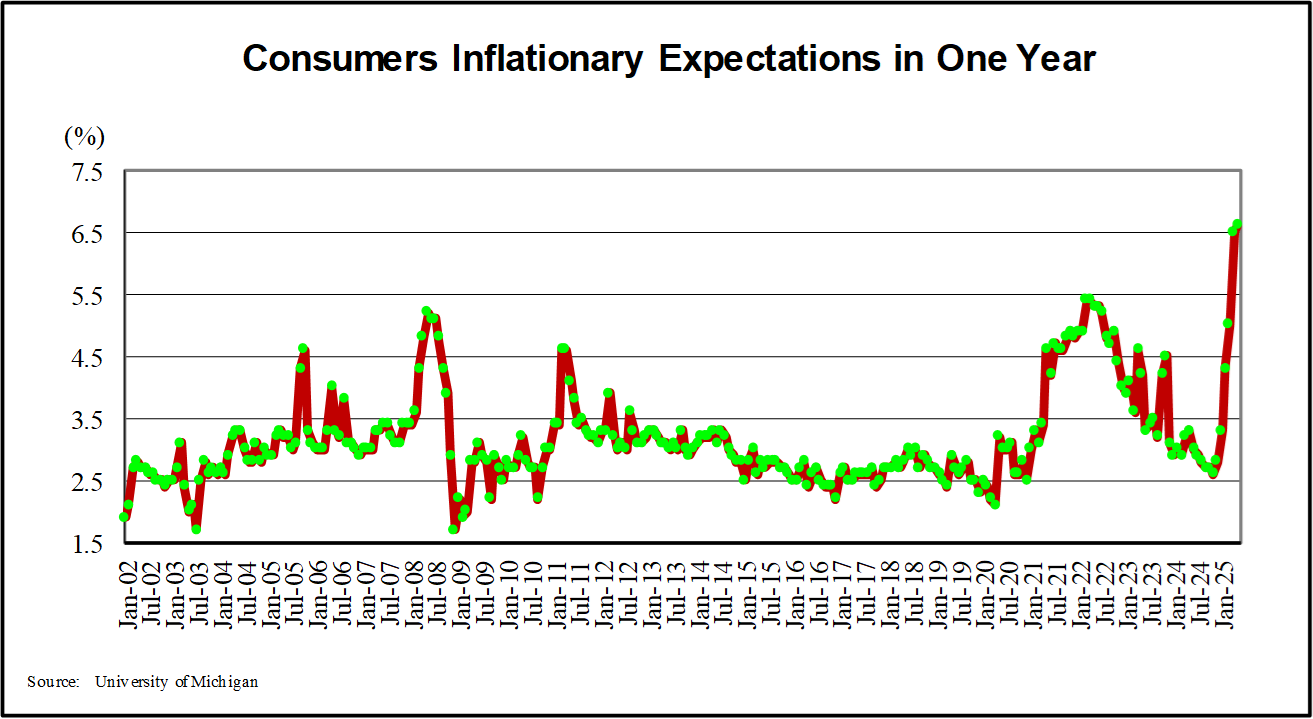June 1, 2025
Uncertainty continues to cloud the outlook and keep the Federal Reserve in wait-and-watch mode. Trade policy remains fluid and major fiscal policy changes loom on the horizon. For now, there have been no significant signs of price pressures stemming from the tariffs and, to date, the labor market is stable enough to allow the Fed to keep policy on hold for clarification. The Federal Open Market Committee, at its May 6-7 meeting, acknowledged the clouds over the economic outlook. In its post-meeting policy statement, the FOMC stated that “uncertainty had increased further,” and judged that the risks of higher unemployment and higher inflation have risen.

First quarter GDP posted a negative growth rate due to record trade deficit as businesses front-ran goods imports ahead of tariffs, but otherwise economic growth seems to be holding on, at least for now. Still, the economy is shrouded in negative sentiment. Economic activity may be in for a pronounced slowdown amid decreased business and consumer confidence and high price pressures due to a fluid trade and fiscal policy environment. Additionally, economic momentum should cool after so much demand was pulled forward to get purchases ahead of the tariffs. The large front-running that occurred means businesses will not need to source as much product as they unwind inventory. The picture for consumers is also murky as surveys have reported they are worried about their jobs and incomes and about higher inflation that may come from tariffs.

The monthly jobs report has revealed relatively stable hiring and a still-low unemployment rate. For the time being elevated uncertainty has businesses slow to hire and slow to fire. The cooling of the labor market has been orderly and barely perceptible, but economists expect a further weakening in the months ahead. Job openings are on a downward trend, but there have been no signs of broad-based layoffs, as initial jobless claims have moved sideways. Still, businesses are looking to cut costs and may start to increase their layoffs of workers to offset tariff pressures.

Higher tariffs also pose a significant threat to the price stability side of the Federal Reserve’s dual mandate. Still, through April, there was little evidence of tariffs boosting inflation. In fact, there has been some moderation in inflation over the past couple of months. This has been largely linked to lower energy prices putting downward pressure on airfare and transportation costs, a significant item for grocery and apparel stores. On the other hand, the decline in goods prices was partially offset by an increase in service prices. Forward looking indicators, such as consumer and business surveys, indicate price pressures will be rising. As tariff agreements and trade pacts are expected to be dragged out over time, inflation may prove to more persistent than initially perceived. If longer-term inflation expectations become unanchored and continue to ebb higher, it could complicate matters with a self-reinforcing loop of greater price pressures.

The prospect of a higher unemployment rate and rising inflationary pressures is a frightening combination for the Fed given their mandate to anchor both. The Fed has to also be concerned about tightening financial conditions. Moody’s downgrade of US debt from Aaa to Aa1in conjunction with the pending budget reconciliation legislation. That legislation has heightened concerns about trade and fiscal policy, larger deficits, and the need for increased issuance of debt and has sent the markets reeling. Fed officials have been clear that they want more clarity about fiscal and trade policy and how the economy responds before they take further action on interest rates. Their ultimate response will be driven by which of the two mandates vary the most from the Fed’s goal of full employment and stable prices. If further weakening in the labor market predominates, they will ease. On the other hand, if price pressures increase further, they will likely be forced to keep rates at restrictive levels, limiting or even eliminating the potential for easing.

 Full Fusion
Full Fusion